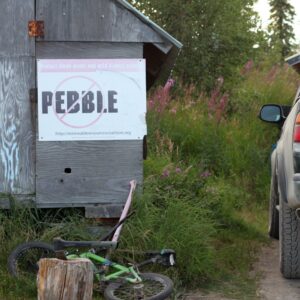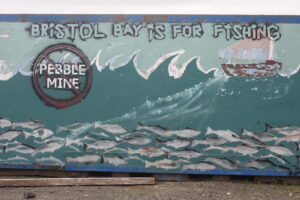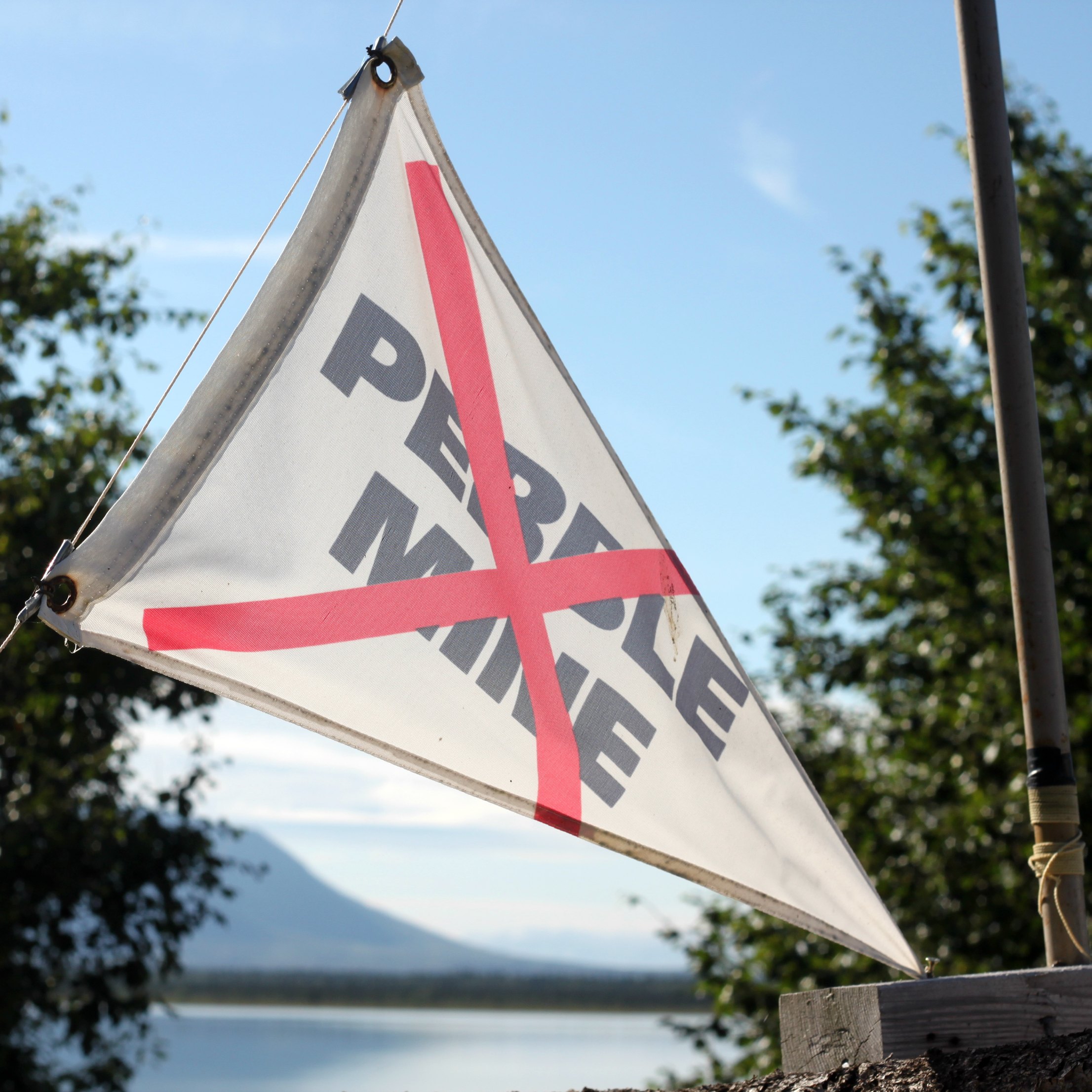
Pebble, EPA cut backroom deal
Last week, the Canadian conglomerate behind the Pebble mine—Northern Dynasty—cut a backroom deal with the Environmental Protection Agency (EPA) to roll back scientifically supported common sense protections for Bristol Bay.
The settlement’s apparent goal? To make potential investors believe the Pebble mine is back on track and will make them lots of money because of a development-friendly administration.
Pebble announced the settlement with investors first and held an investor-focused press conference before notifying the court. When Pebble finally filed legal papers, it simply stated that it had reached an agreement with the EPA and asked the court to dismiss the case.
In other words, the deal Pebble calls “fair” dismissively discarded what the people of Bristol Bay requested the EPA to do to ensure the protection of their waterways, fisheries, livelihoods, food sources, and homes.

The Bristol Bay watershed nourishes the world’s largest wild sockeye fishery and thousands of sustainable jobs. (Photo by Brian Litmans)
An unlikely alliance
In 2010, six federally recognized Bristol Bay tribal governments requested that the EPA initiate a process under Section 404(c) of the Clean Water Act to protect waters, wetlands, fish, wildlife, fisheries, subsistence, and public uses in the Nushagak and Kvichak River watersheds and Bristol Bay from metallic sulfide mining, including a potential Pebble mine. Three additional Bristol Bay tribal governments and other stakeholders joined with the original petitioners to ask for EPA action, including three Bristol Bay tribes, the Bristol Bay Native Association, the Bristol Bay Native Corporation, Bristol Bay groups dependent on the fishery, and elected officials from Alaska and other states.
An article in the Atlantic put it this way: “In 2010, an unlikely alliance of commercial fishermen, native tribes, and concerned citizens decided that their next best hope for stopping the Pebble Mine was to get the federal government to intervene. Even ‘Redneck Republicans,’ as one Alaskan called himself, were concerned that the mine’s promise wasn’t enough to risk ruining the salmon fishery. The alliance petitioned the U.S. Environmental Protection Agency to conduct a preliminary investigation of the potential ecological impact of a hypothetical large-scale mining operation in Bristol Bay.”
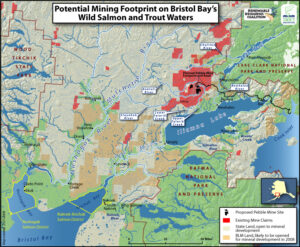
Pebble has still not submitted its permit application after ten years of promising to do so. Map by Trout Unlimited.
Bristol Bay Watershed Assessment confirms threat to Bristol Bay
The EPA’s scientific assessment in Bristol Bay started in February 2011 and eventually produced the 2014 Bristol Bay Watershed Assessment, a twice peer-reviewed assessment of the impacts of mining on the region. The assessment resulted in the EPA’s Proposed 404(c) Determination finding that the Pebble mine would do devastating damage to the watershed and salmon fisheries.
Truth is, if the EPA determines that a proposed mine will adversely impact a fishery and watershed, then a responsible mining company would have identified changes in the project that would address those unacceptable outcomes. What did Pebble do instead? It took EPA to court, charging the agency with improperly colluding with Alaska Natives, tribal entities, scientists, and conservation groups.
Pebble harasses opponents, blocks protections
As part of that litigation, Pebble subpoenaed mine opponents in an attempt to get their private letters and emails. Pebble continued to harass the people who spoke out against the mine and who supported the EPA’s assessment and conclusions for years. It took two court orders before Pebble stopped.
That same litigation also legally blocked the EPA from finalizing its proposed determination, preventing a scientifically supported action that would have protected Bristol Bay.
Now, fast forward to the settlement in Pebble’s lawsuit. Last week’s backdoor deal starts a process for tossing out the EPA’s proposed determination and all the common sense protections it would require.
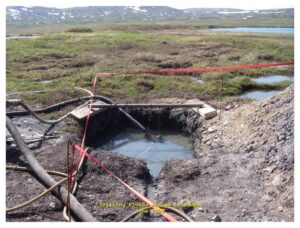
Even exploration pollutes. The Watershed Assessment found that a mine would devastate Bristol Bay waters and salmon.
EPA agrees to not use authority to protect Bristol Bay
The settlement further requires that the EPA not use its authority under Section 404(c) of the Clean Water Act to protect Bristol Bay for at least two and a half years. In addition, if Pebble files a permit application within that time frame, the EPA agrees it will continue to not to use that authority for another one and a half years or until the completion of a final Environmental Impact Statement, whichever comes first.
In other words, the EPA gave a foreign mining company at least four more years to badger Alaskans who simply want to live their lives and take care of their communities. It means that the people of Bristol Bay will endure continued anxiety and uncertainty while continuing to spend their personal time, energy and community resources to raise their voices in opposition. It means Alaska communities will suffer the divisive tactics used by Pebble’s PR machine.
The people who call it home will stand their ground
The people of Bristol Bay will have to say “no” again and again, over and over, despite having already said “no” for more than ten years.
Pebble says it wants consensus, but it clearly does not care about consent. If it did, Pebble would have left Bristol Bay years ago. Northern Dynasty certainly lives up to its name with this settlement: it presumes that Alaskans owe it the resources it wants, and it will do everything it can to get at them, including ignoring the local people’s overwhelming opposition and disregarding the health and the well-being of Alaska communities.
Pebble tells potential investors it can deliver on its promise of submitting a permit application within a year. It has been saying that for over ten years. The purpose of this settlement is to let Pebble put more money into a bad project to justify its own bad investment—and it does so at the expense of Bristol Bay.
The overwhelming majority of people in the region know the true value of Bristol Bay, and unlike Pebble, they will stand by it and protect it now, tomorrow and at every turn.



